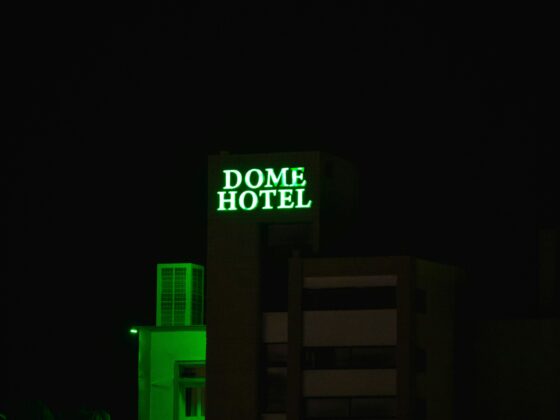
Breaking down your audience into different segments with specific messages and offers drives engagement, clicks, and bookings. Yet many hotels still send the same blanket messages to their entire database, and it isn’t producing the results they had hoped for. Segmentation can be simple and effective, capitalizing on the basic data you already have.
Relevance is crucial as marketing messages bombard consumers across every channel. People are increasingly immune to generic outreach. Research shows that 81% of customers prefer to engage with companies that offer a personalized experience, both in person and across digital channels. For hotels, segmentation is the key to achieving this level of personalization.
By dividing a large audience into smaller, meaningful groups (segments) based on booking characteristics, purchase preferences, and buying behavior, you can tailor communications that feel timely and personal, creating an immediate connection with prospective guests. The best part? You don’t need to ask for a vast amount of personal data to do it.
Emails that Get the Attention You Need
Increasing relevance enhances email success, including deliverability, clicks, and engagement. While improving the guest experience, it ultimately drives conversion and return on investment (ROI). Segmenting guests enables targeted campaigns that win business. However, many hotels are not segmenting at all, and marketing waste is becoming a significant pain point.
The reality is that 21% of legitimate marketing emails land in spam folders. This is often due to poor targeting and generic content. Hotels that continue to send the same content to their entire database actually damage their reputation as senders.
If someone hasn’t clicked or opened an email from your hotel in the last 6 months, they’re not interested, and internet service providers (ISPs) will penalize you for this. Therefore, not segmenting your email list gradually makes your life harder and increases the likelihood that your emails will land in spam folders instead of inboxes.
So Why Isn’t Segmentation Happening?
One common misconception is that segmentation is too complex for hotels to manage with the tools and data they have. Often, they’re unsure where to begin. Some take an overly cautious or traditional approach to data. In contrast, others assume they need highly detailed, elaborate personas to do segmentation properly, so it never actually gets off the ground.
Yet, none of these reasons need to be barriers to effective segmentation. Even the most basic data helps segment and achieve a level of personalized relevance.
Get a Handle on Current Email Performance
Where should you begin? Start by examining how recipients engage with your emails, as every campaign provides valuable engagement data. This data can offer key insights for audience segmentation. For instance, did someone open or click on a campaign in the last six months? That suggests they’re interested and engaged. Were they added to your database within the past two months? They might be more receptive to your messaging.
Most email platforms provide campaign engagement filters, making this an easy and effective entry point for segmentation and a means to craft more relevant, personalized messages. After reviewing recent email performance and identifying opportunities to customize your communications, you can move on to these five practical ways to utilize your guest booking data to go beyond one-size-fits-all marketing.
1. Stay Dates Are a Goldmine.
Every hotel records them, and they offer valuable insights for segmentation. Did a guest stay midweek or over the weekend? That can hint at whether they’re traveling for business or leisure. What time of year did they visit? They might be convinced to stay during the same season in the future or visit during another season. Was there a significant event taking place during their stay? That could be a key motivator for future visits.
Action: Use stay date data to create tailored business or leisure offers, seasonal promotions, and campaigns timed around similar upcoming events.
2. Where Your Guests Come From Matters.
Travelers from different countries bring unique languages, preferences, and cultural expectations. Hoteliers can tailor campaigns to better resonate with international audiences by segmenting based on guest origin. Booking data can reveal trends by region, such as popular travel times, local holidays, school breaks, and preferred experiences, allowing you to craft more relevant and appealing messages.
Action: Develop customized email campaigns and offers for guests in your top five international markets, focusing on what resonates most in each region, especially those with high spending potential.
3. Rate Codes Reveal What Works.
Each rate code is linked to a specific offer, package, or marketing initiative, providing you with clear visibility into what resonates with your guests. When someone books using a particular code, it indicates which campaign, channel, or message influenced their decision. Over time, you can identify trends, such as certain codes being associated with larger room bookings, add-ons like dining packages, or travel during specific seasons.
Action: Analyze your highest-performing rate codes to uncover which offers convert best. Use these insights to retarget those guests with similar future promotions. For even better results, create personalized landing pages for each campaign or guest segment, aligning with their preferences to foster loyalty and drive repeat bookings.
4. Room Choice Speaks Volumes.
The type of room a guest books—whether a standard room or a premium suite—offers insight into their budget, priorities, and preferences. It helps you understand what matters to them, from affordability to added luxury, and gives you a foundation for crafting more relevant offers moving forward.
Action: Segment your guests by the room types they previously booked. Then, tailor your email campaigns to match their preferences—whether that’s promoting similar stays or encouraging upgrades with personalized, value-driven offers.
5. Booking Channels Tell a Story.
How a guest books—whether directly, through an OTA, a travel agent, or another channel—offers valuable insight into their habits and preferences. It also presents a clear opportunity: turning third-party bookings into direct ones.
Action: Start by segmenting guests who booked through OTAs and develop a long-term strategy to encourage direct bookings. Provide them with compelling reasons to switch, like loyalty rewards, exclusive room access, or more flexible terms. Maintain the momentum with consistent messaging that reinforces the value of booking directly and makes them feel recognized and rewarded.
Segmentation Makes a Difference
Segmentation is one of the most persistent challenges in hotel marketing—an age-old topic that remains just as relevant today. However, it doesn’t have to be overwhelming. By simply starting with the data you already have, you can take meaningful steps toward personalization and build stronger, more targeted connections with your guests.







